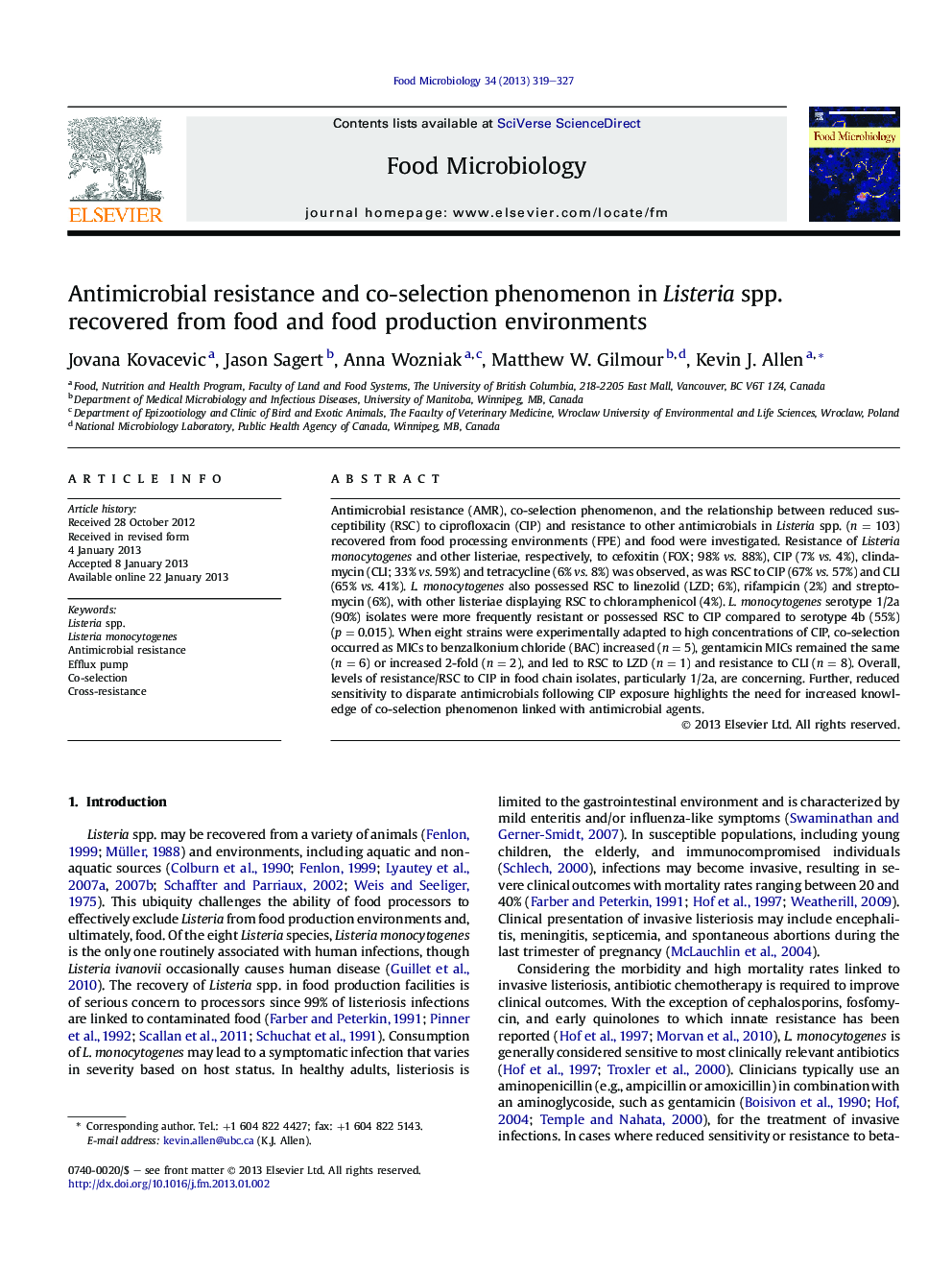| Article ID | Journal | Published Year | Pages | File Type |
|---|---|---|---|---|
| 6288941 | Food Microbiology | 2013 | 9 Pages |
Antimicrobial resistance (AMR), co-selection phenomenon, and the relationship between reduced susceptibility (RSC) to ciprofloxacin (CIP) and resistance to other antimicrobials in Listeria spp. (n = 103) recovered from food processing environments (FPE) and food were investigated. Resistance of Listeria monocytogenes and other listeriae, respectively, to cefoxitin (FOX; 98% vs. 88%), CIP (7% vs. 4%), clindamycin (CLI; 33% vs. 59%) and tetracycline (6% vs. 8%) was observed, as was RSC to CIP (67% vs. 57%) and CLI (65% vs. 41%). L. monocytogenes also possessed RSC to linezolid (LZD; 6%), rifampicin (2%) and streptomycin (6%), with other listeriae displaying RSC to chloramphenicol (4%). L. monocytogenes serotype 1/2a (90%) isolates were more frequently resistant or possessed RSC to CIP compared to serotype 4b (55%) (p = 0.015). When eight strains were experimentally adapted to high concentrations of CIP, co-selection occurred as MICs to benzalkonium chloride (BAC) increased (n = 5), gentamicin MICs remained the same (n = 6) or increased 2-fold (n = 2), and led to RSC to LZD (n = 1) and resistance to CLI (n = 8). Overall, levels of resistance/RSC to CIP in food chain isolates, particularly 1/2a, are concerning. Further, reduced sensitivity to disparate antimicrobials following CIP exposure highlights the need for increased knowledge of co-selection phenomenon linked with antimicrobial agents.
⺠AMR was observed in all Listeria, and included clinically relevant antimicrobials. ⺠Most Listeria spp. were resistant or had reduced susceptibility to ciprofloxacin. ⺠Serotype 1/2a strains were more frequently tolerant to ciprofloxacin than 4b. ⺠Ciprofloxacin (CIP) adaptation led to AMR co-selection phenomenon. ⺠Experimental CIP adaptation led to increased tolerance to BAC, CLI and GEN.
